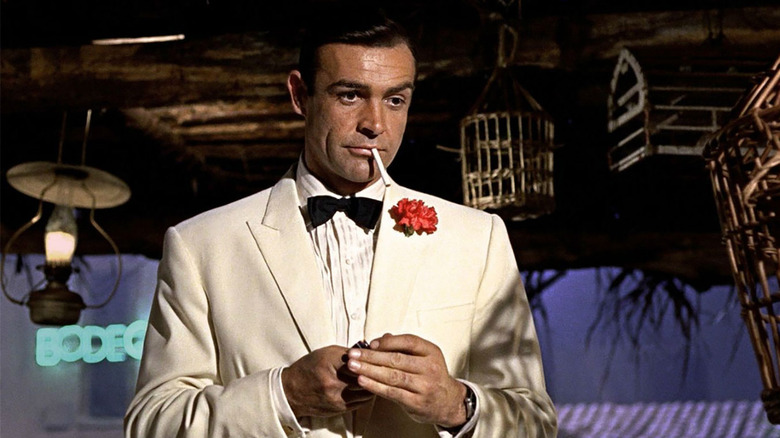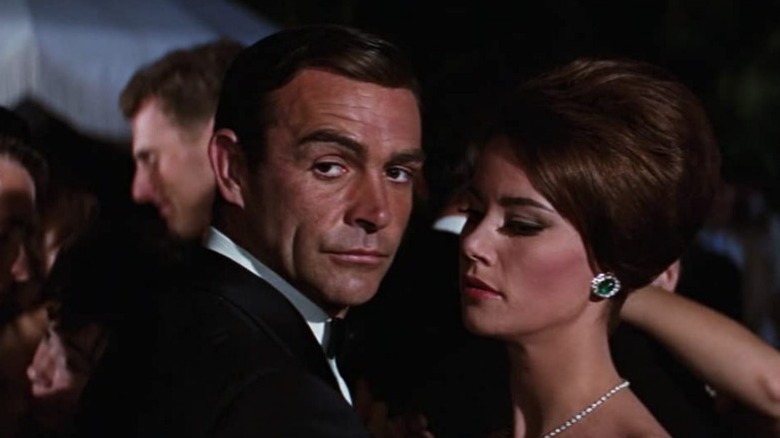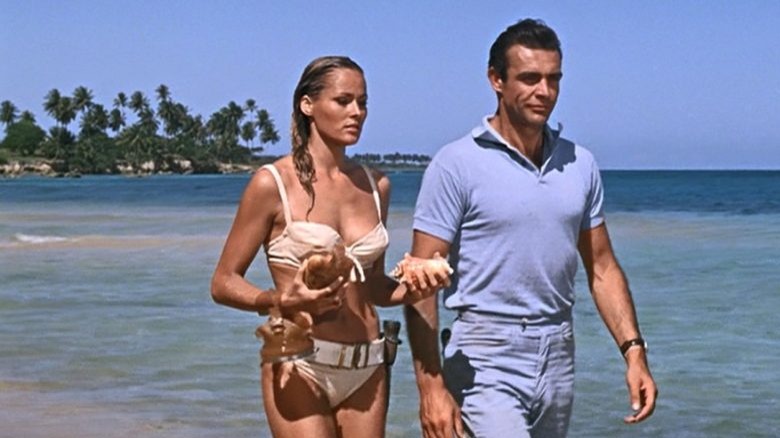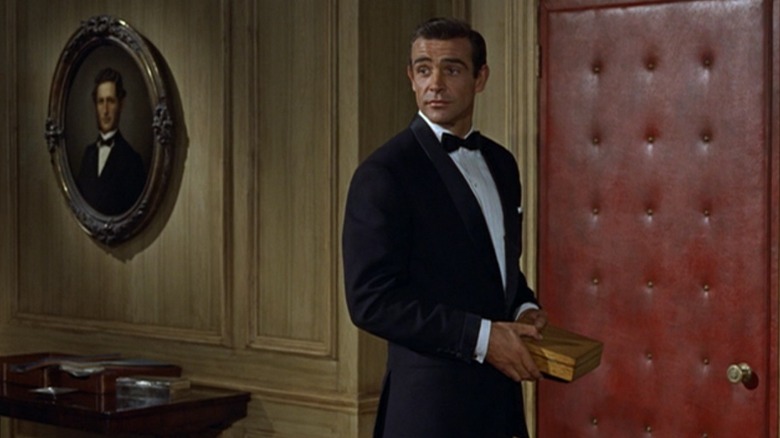Not Even Sean Connery Was Confident He Would Make A Good James Bond
We may receive a commission on purchases made from links.
With a variety of James Bond performances scattered across 60 years of the famed film franchise, there are plenty of options for fans to pick their favorite. The series has gone in many different directions as well, constructing movies around the personalities of the actors playing 007. As longtime producer Barbara Broccoli noted, James Bond movies haven't "been afraid to change with the times." There's the cornball genre-hopping of the Roger Moore years and the gritty realism of the most recent Daniel Craig movies. But all of the performances of Bond stand in the shadow of the character's first true cinematic portrayal. When Sean Connery came onto the screen as Bond in 1962's "Dr. No," he gave a strong impression of Ian Fleming's character, coloring him in the memories of audiences forever as the James Bond.
However, Connery wasn't Fleming's first choice for Bond, nor was he immediately successful in playing the character. The smarmy Scot was able to produce in his portrayal of Bond a cool sense of detachment and an arsenal of one-liners, no matter the danger or his own capacity for violence. But that couldn't have been farther from what he was actually feeling on-set. According to his co-star, Eunice Gayson, he was riddled with anxiety, whiffing on easy lines on his first day. The confidence he would bring to Bond needed to be refined before it could truly emerge.
Making a James Bond movie
When writer Ian Fleming began work on the first James Bond novel, "Casino Royale," in the early 1950's, he couldn't have known he was on the cusp of creating a cultural phenomenon that would be embraced by a world engulfed in the Cold War. According to Ben MacIntyre's book "For Your Eyes Only," Fleming was even embarrassed by the manuscript. The Bond of the book was inspired by men whom Fleming had encountered as a Naval Officer during World War II. He was also inspired by Fleming himself, becoming a character simultaneously rough-hewn and intellectual, violent but sophisticated.
By the end of the '50's there was a great deal of interest in getting a James Bond film made. Fleming developed an original film treatment with writers Kevin McClory and Jack Whittingham that, while the project stalled, he turned into the book "Thunderball." McClory and Whittingham sued him, generating a rights morass that would need some 50 years before it could be undone in time for 2015's "Spectre."
Fleming's bad experiences with Hollywood led him into the arms of Albert Broccoli and Harry Saltzman, who formed EON Productions to produce movies based on his books (excluding, for a time, "Thunderball" and "Casino Royale"). All they needed was a leading man.
The rough diamond
According to Vanity Fair's 50-year retrospective on the James Bond films, Sean Connery was universally seen as a "rough diamond" whose working-class upbringing was unlikely to yield a true film career. Robert Sellers' book "Sean Connery: A Celebration" noted that Connery even had experience with street violence in Edinburgh. His fame was the fruit of bodybuilding contests and local theater. His slow and unwieldy rise through the movies came from extra-to-small parts in film and BBC productions. With minor exceptions, he hadn't drawn much critical attention.
During the casting process of "Dr. No," Ian Fleming was partial to David Niven as Bond, a gentlemanly British actor who'd been in films like "Around the World in 80 Days." The producers were fond of future Bond actor Roger Moore, who had a similar warmth, which would drastically alter the tone of the series once he took the reins with 1973's "Live and Let Die." Connery may not have had the politesse of the competitors for the role, but he did have something else, a certain quality only spotted by Albert Broccoli.
Maybe it was the roughness of Connery's raising that appealed to Broccoli. It certainly didn't appeal to "Dr. No" director Terence Young, who had worked with Connery on the 1957 thriller "Action of the Tiger." According to the Vanity Fair piece, Young said "disaster, disaster, disaster" on hearing the news.
Terence Young's school of manners
Terence Young immediately saw disaster when the movie began filming. For Sean Connery's now-legendary introductory scene as the spy ("Bond. James Bond."), he only needed to say three words. But the actor was apparently so nervous that he kept getting the name wrong, saying "Sean Bond, James Connery," according to co-star Eunice Gayson, who played Sylvia Trench in the film.
Gayson claimed that Young requested she take Connery out for a drink to loosen him up a bit, and it worked, clearing his nerves but not quite taking the edge off. Moreover, Young's relationship with Connery grew as they worked together. The class divisions that made Connery such an intriguing personality as Bond forced Young into the role of tutor. If Connery wasn't confident in playing the refined agent before, he would soon be. In the Vanity Fair retrospective, the movie's production designer recounts how Young taught Connery manners and introduced him to specialized tailors and fine dining. The actor was able to keep his edge and maintain an eye for the finer things.
Fleming remained skeptical of the casting until the premiere of the film. His prejudices around the tall, tough Connery gave way when he recognized the wisdom in the casting. Catapulting past his nerves, Connery sealed his legend, and became what many consider to be the best James Bond.



